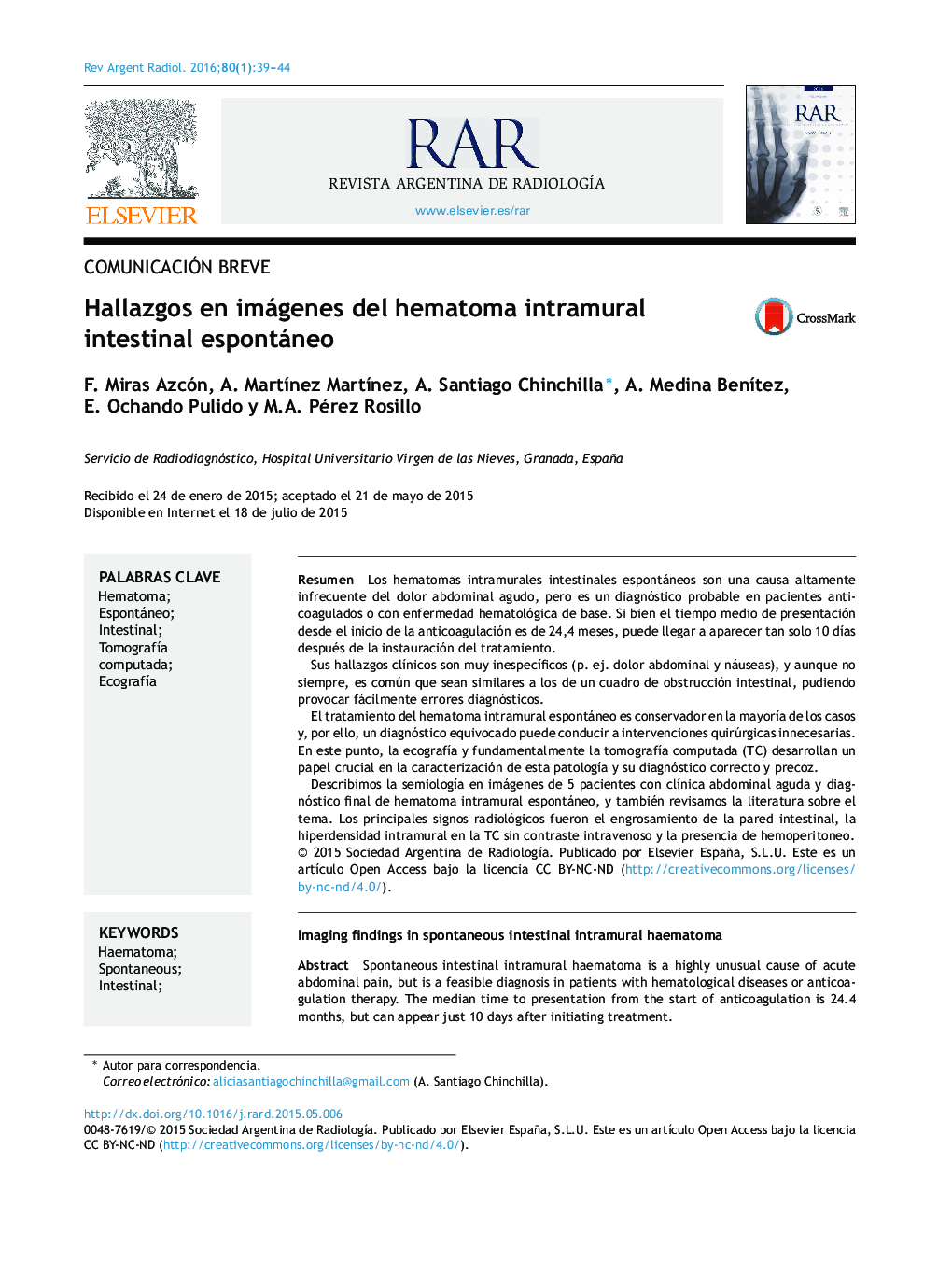| Article ID | Journal | Published Year | Pages | File Type |
|---|---|---|---|---|
| 4248643 | Revista Argentina de Radiología | 2016 | 6 Pages |
ResumenLos hematomas intramurales intestinales espontáneos son una causa altamente infrecuente del dolor abdominal agudo, pero es un diagnóstico probable en pacientes anticoagulados o con enfermedad hematológica de base. Si bien el tiempo medio de presentación desde el inicio de la anticoagulación es de 24,4 meses, puede llegar a aparecer tan solo 10 días después de la instauración del tratamiento.Sus hallazgos clínicos son muy inespecíficos (p. ej. dolor abdominal y náuseas), y aunque no siempre, es común que sean similares a los de un cuadro de obstrucción intestinal, pudiendo provocar fácilmente errores diagnósticos.El tratamiento del hematoma intramural espontáneo es conservador en la mayoría de los casos y, por ello, un diagnóstico equivocado puede conducir a intervenciones quirúrgicas innecesarias. En este punto, la ecografía y fundamentalmente la tomografía computada (TC) desarrollan un papel crucial en la caracterización de esta patología y su diagnóstico correcto y precoz.Describimos la semiología en imágenes de 5 pacientes con clínica abdominal aguda y diagnóstico final de hematoma intramural espontáneo, y también revisamos la literatura sobre el tema. Los principales signos radiológicos fueron el engrosamiento de la pared intestinal, la hiperdensidad intramural en la TC sin contraste intravenoso y la presencia de hemoperitoneo.
Spontaneous intestinal intramural haematoma is a highly unusual cause of acute abdominal pain, but is a feasible diagnosis in patients with hematological diseases or anticoagulation therapy. The median time to presentation from the start of anticoagulation is 24.4 months, but can appear just 10 days after initiating treatment.Clinical findings of this entity are non-specific (for example, abdominal pain or nausea), and although not always, they are often similar to those observed in intestinal obstruction. As a result, they can easily lead to diagnostic errors.The treatment of intramural haematoma is conservative in most cases and, therefore, an incorrect diagnosis may lead to unnecessary surgery. At this point, ultrasound, and in particular, computed tomography (CT) have become essential in the characterisation of this disease and its correct and early diagnosis.The signs and symptoms are presented on 5 patients with acute abdominal symptoms and a final diagnosis of spontaneous intramural haematoma, along with a review of the literature. The main radiological signs were thickening of the intestinal wall, intramural hyperdensity on CT without intravenous contrast, and the presence of a haemoperitoneum.
